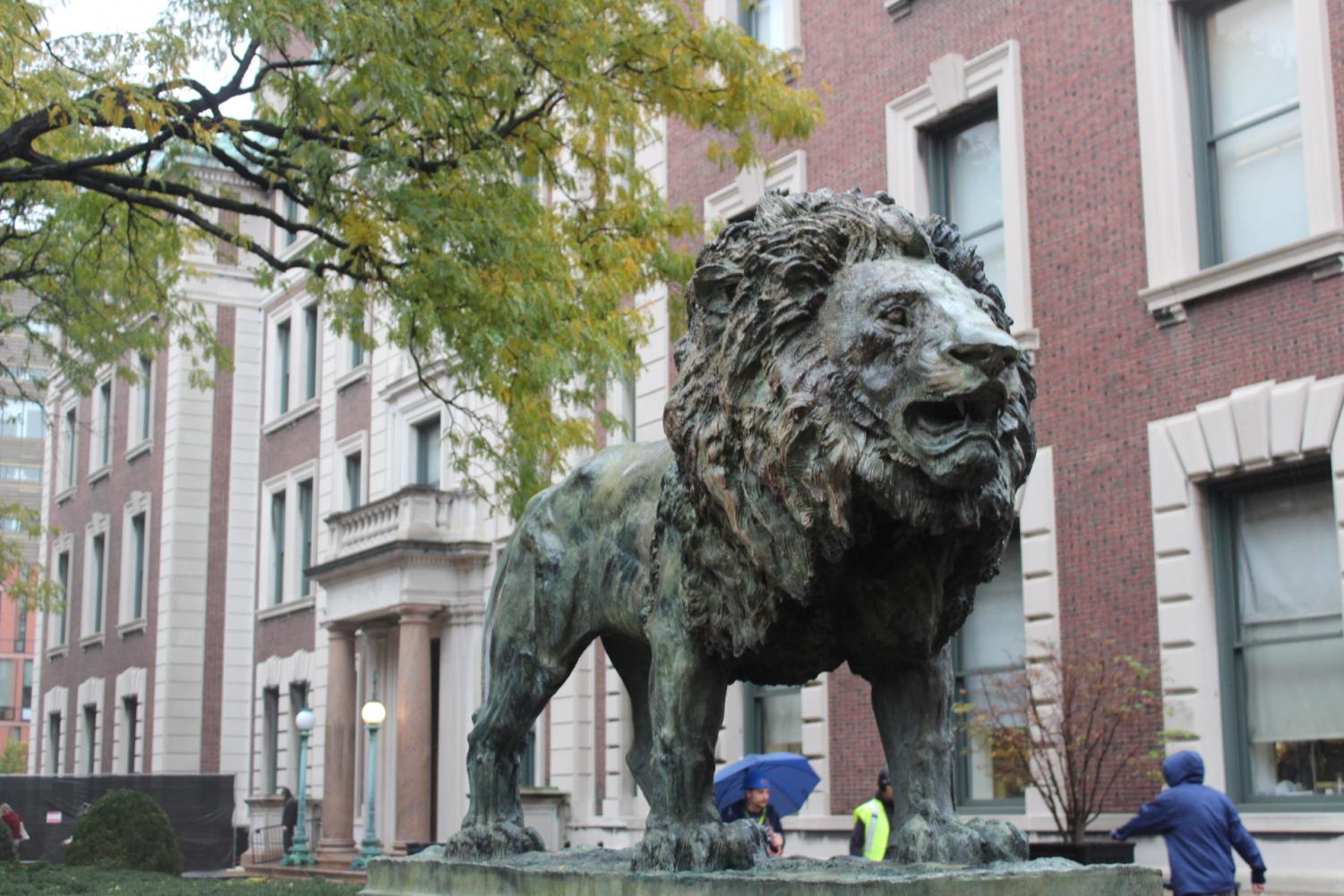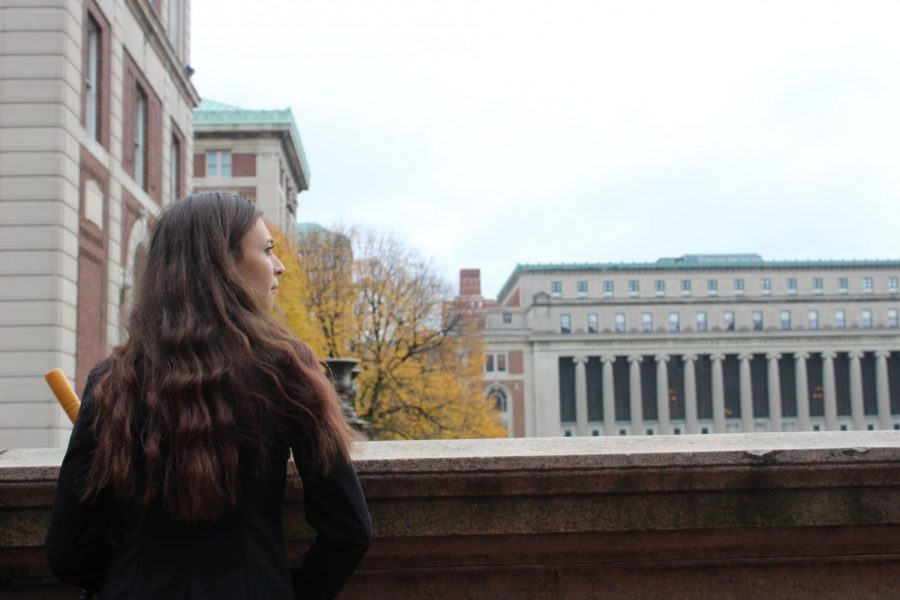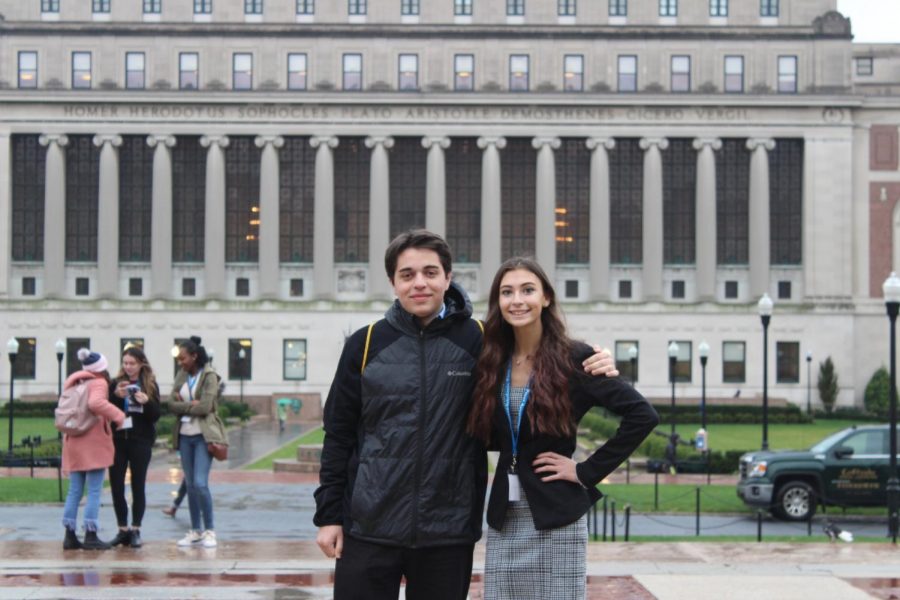The Red & Black Visits Columbia University
The staff writers from the Red & Black visited Columbia for the 89th Annual CSPA Fall Conference.
November 9, 2018
Learning to Find the Story
On November 5, 2018 a group of talented journalists took a trip into New York City to visit the beautiful Columbia University campus. Schools from all around the United States attended the conference; while getting to know some of the other journalists we came to realize we all have the same passion…writing.
Each individual has their own category of preferred writing and attending the conference would help us all learn how to take our interests and bring them to the next level. With being ranked #3 this college had a lot to offer each student and administrator that attended the workshop with different lessons including media, promotions, news, laws and ethics, photography, magazines, and yearbook.
At 9:30 I attended my first class and decided to start with “How to write for online publications” taught by Chris Waugaman. Chris spoke to us about how the articles you write, have to connect with the readers.
“You have to be able to find the most important story and don’t bury the lead” said Chris; making sure that the audience will want to read your article by having capturing headlines, good content and to be able to follow up with new information about the topic. This was very helpful when trying to make your article the best it could be.
Next up was “Digging up Secrets” taught by Danielle Ivory and Matthew Chayes or as I like to call it “Spilling the Tea.” In order to find secrets you have to be a good journalist and figure out where to search; asking questions to the right people and finding documents or receipts can be a big step in uncovering the truth. Both explained that public records can play a huge part in moving forward with your investigation.
Some schools might censor certain topics from being released but both advisors said “don’t let that stop you from finding the truth”. They ended the class with saying “it’s like finding keys, you have to dig through until you find what you’re looking for”.
The last lecture on my list was “It’s all about the content” with speaker, Jake Palenske. This was my favorite class only because as we were sitting in the room Mr. Palenske had told us that Spiderman 1, 2 & 3 had all been filmed in that room; how cool is that?
This workshop told us about all the different ways to find, create, and tell a story in a way that the reader would find most interesting. One thing that Jake had said was “assume nothing, always ask questions.” Asking questions will get you further and further into your story so you get to report the whole truth.
As our Columbia trip came to an end all of the students had spoken about what they had learned. The most important thing we all left with was to have creativity as well as uncover the truth and dig for answers to get the best story.
It’s exciting to travel to the city when you’re normally sitting under florescent lights in a classroom but, this was one of the most informative experiences for young writers. We each left prepared to bring home all the knowledge and share at our next Red & Black meeting (every Friday).
Does ‘Fake News’ affect High School Media?
Fake news is nothing new. In fact, it’s been around for centuries. From the days of our founding fathers, to now, with recent political events, fake news seems to be a phrase that’s constantly in use.
At Columbia University, David Uberti, a writer from New York, gave a little talk regarding this issue. He highlighted the importance of spotting fake news, and how young journalists today can help prevent it. But, what is fake news really?
Uberti describes is as “notably fabricated information that has been produced to seemingly look like real news.” Fake news has become an epidemic to modern day society. It has divided people across the nation, even the globe. If fake news isn’t kept in check, it can become a dangerous threat; almost as scary as world terrorism.
Of course, some fake news may be more notable than others but its main purpose is to draw attention and convince others of things that aren’t true. David Uberti explained how fake news has been a tool since the beginning of time. It was a way persuade others into believing illegitimate things. One of the best examples is propaganda from the WWII era. In the U.S., much of it was centered around making Germans seem like a cruel and animalistic society. Pictures even depicted them as beastly or monster-like. By distributing such false information, countries like the United States were able to recruit more people for war.
What about today? What fake news have we seen in light of recent events? Here are the false stories, along with the percentages of Obama supporters who believed they were at least “probably” true (in parenthesis):
- Clinton was in “very poor health due to a serious illness” (12 percent)
- Pope Francis endorsed Trump (8 percent)
- Clinton approved weapons sales to Islamic jihadists, “including ISIS” (20 percent)
Some people and researchers have even suggested that fake news might have won Donald Trump the 2016 election. Whether people agree with this suggestion or not, it highlights the importance of how much an effect fake news can have in our daily lives.
David Uberti asked us, as young journalists, to try and prevent this by checking and questioning everything. Not to just blindly believe everything that we hear. As future writers and social media users we should make sure that the information we tweet and post is accurate and not just some false propaganda. By doing so, we can decrease the tight hold fake news has over us.


